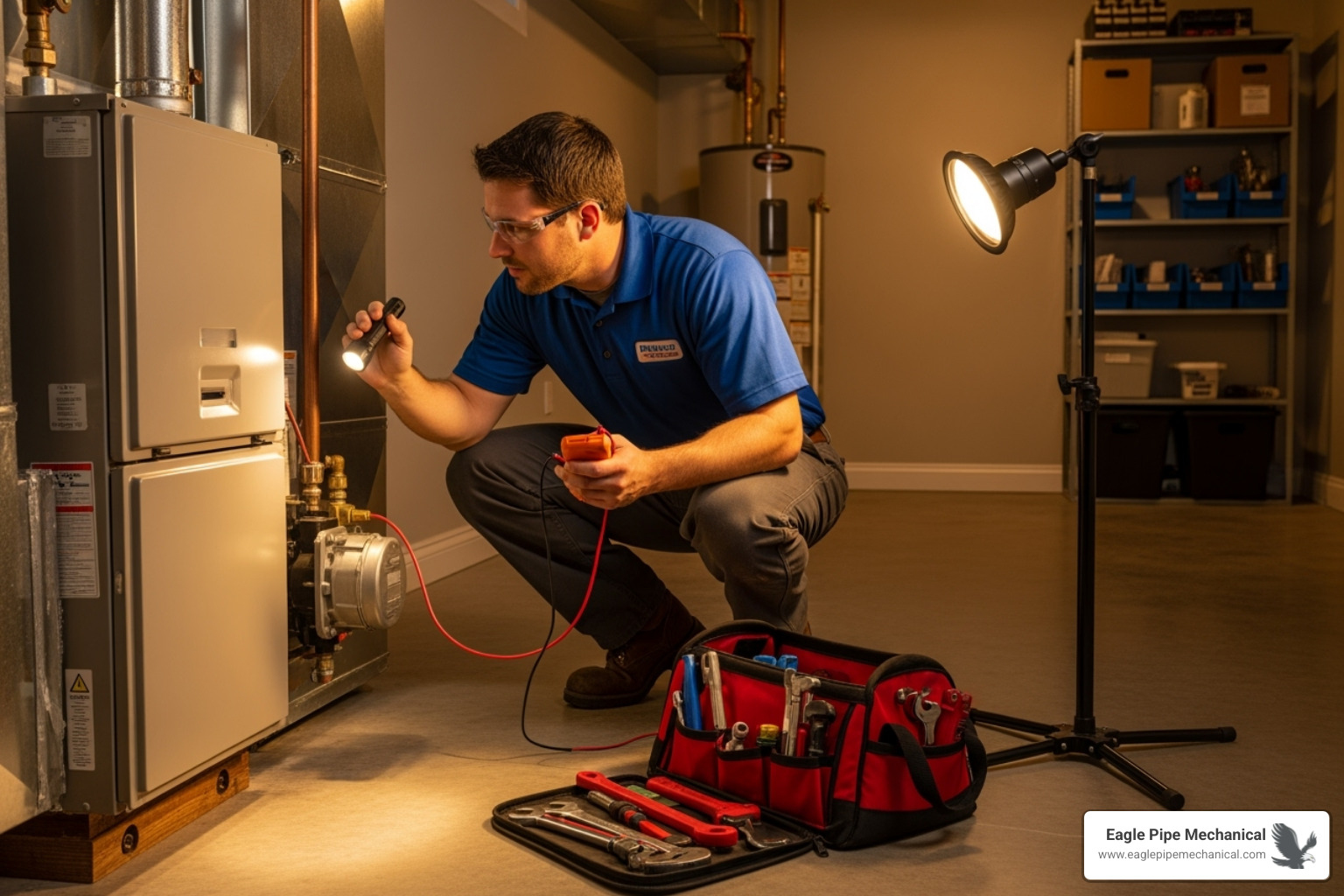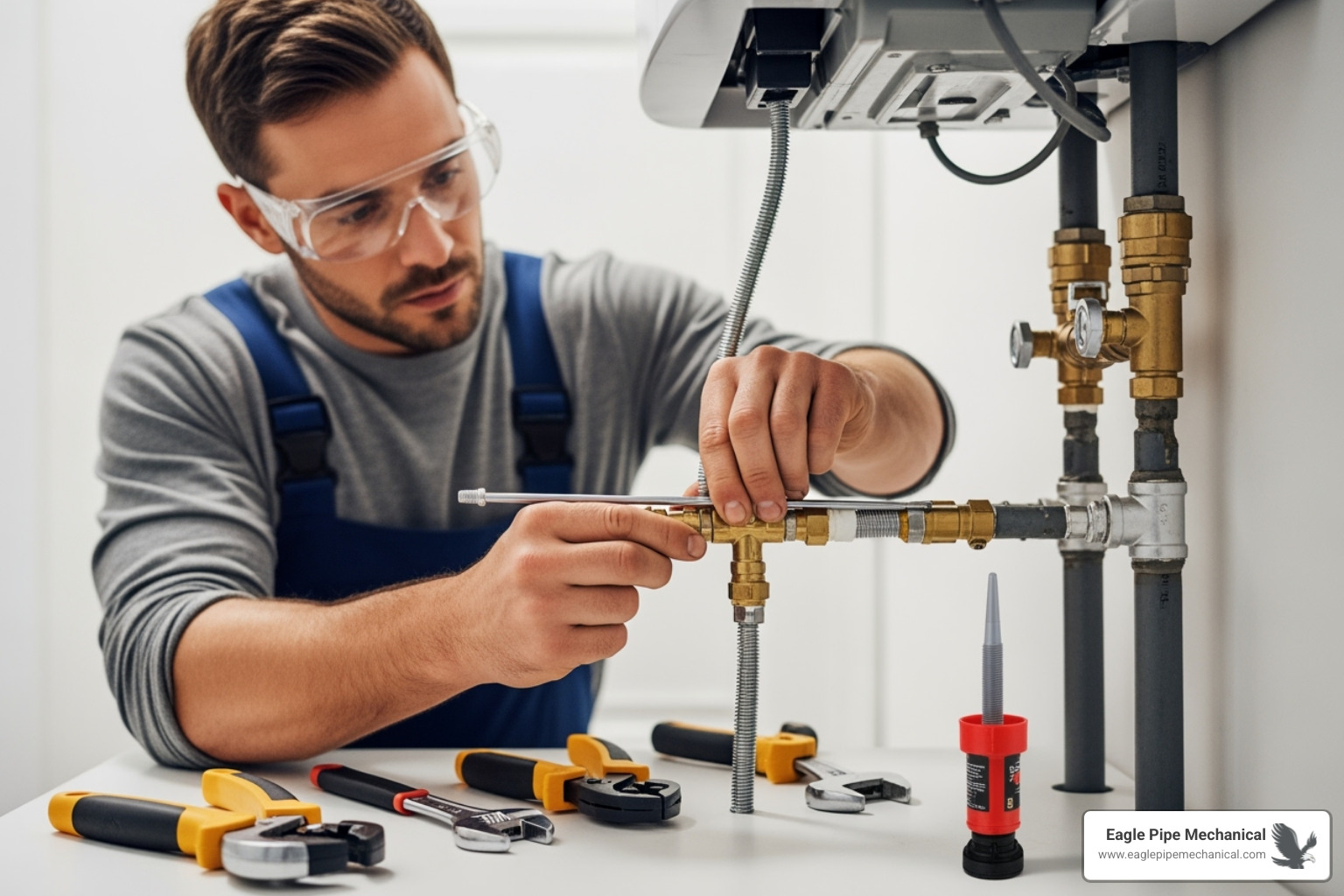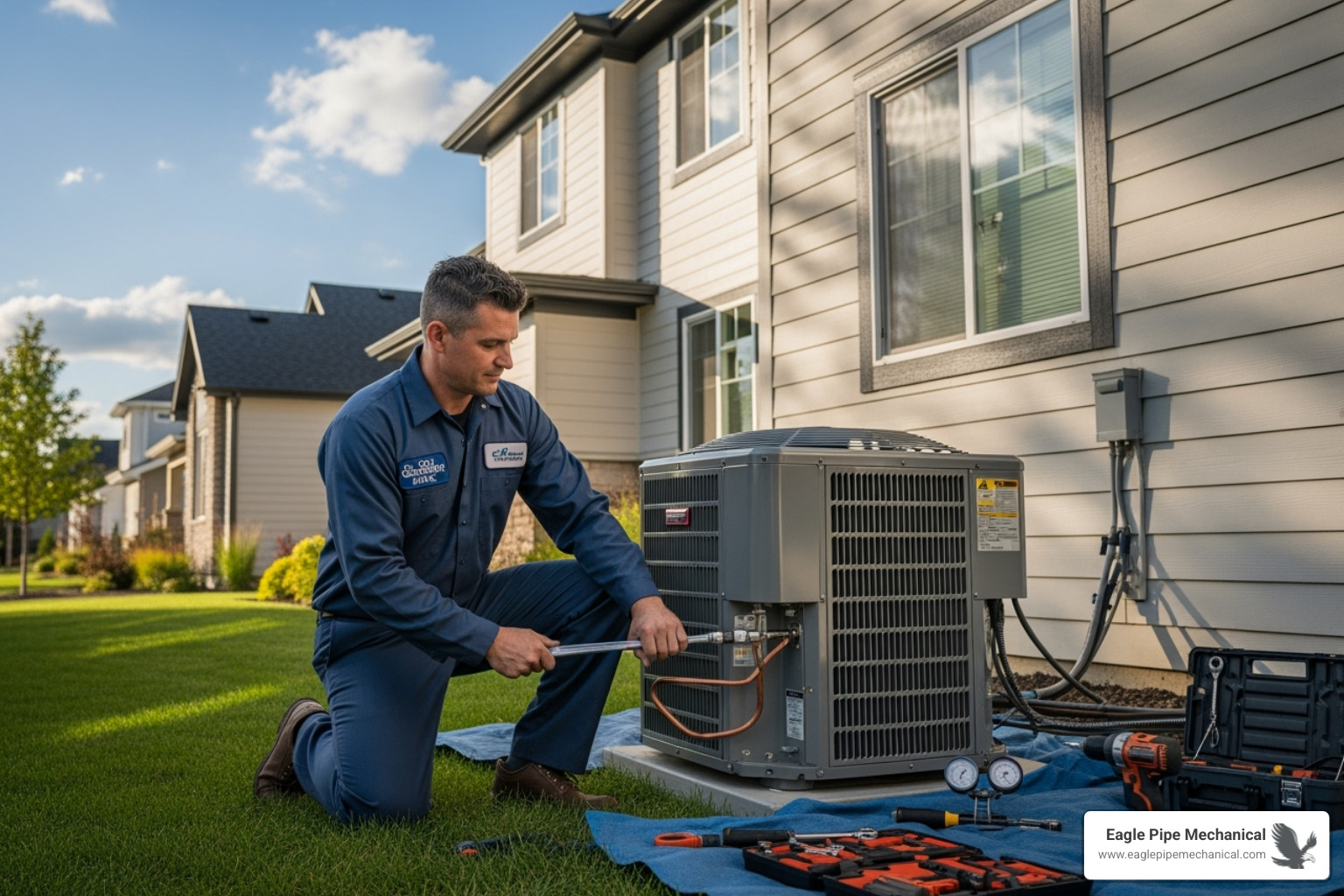When a toilet in your Poulsbo home keeps running long after it’s been flushed, it’s more than a small annoyance. The constant sound of water trickling from the tank can be frustrating, but more importantly, it’s slowly bumping up your utility bill and putting stress on the system. Many homeowners ignore it at first, hoping it will fix itself or go away, but it rarely does. If left alone, that slow drip can lead to even bigger plumbing issues down the line.
A constantly running toilet usually signals a problem with one of the tank’s components. These parts wear out with time, shift out of place, or get blocked by buildup inside the tank. Figuring out the exact cause can feel overwhelming, especially when every flush leads to minutes of non-stop water noise. Fixing it as early as possible helps reduce water waste, control costs, and keep the rest of your plumbing system operating the way it should.
Common Causes Of A Running Toilet In Poulsbo Homes
Several internal pieces keep your toilet functioning properly, and if even one of them isn’t working right, it can throw off the entire system. Here are the most common causes of toilets that don’t stop running:
1. Faulty Flapper
The flapper is the rubber piece at the bottom of the tank. It lifts up when you flush and drops back down to seal the tank. If the flapper gets warped, hardened, or partially stuck, water will continue to leak into the bowl, causing the fill valve to keep cycling. In older homes around Poulsbo, worn-out flappers are one of the top reasons for running toilets.
Call Us
2. Float Issues
The float device tells the fill valve when to stop adding water. If the float is set too high, it causes the tank to fill too much and drain through the overflow tube. If it’s set too low, the tank doesn’t fill all the way, resulting in repeated filling attempts. A float that’s out of alignment or damaged can throw the system off completely.
3. Fill Valve Problems
The fill valve pushes water into the tank after each flush. When this part wears out or gets blocked, it might not shut off correctly. That keeps the water flowing, which in turn keeps the toilet running. Leaks around the fill valve base, strange hissing sounds, or irregular fill cycles often point to a defective valve.
4. Chain Problems
The chain connects the toilet handle to the flapper. If it’s too short, the flapper might not close all the way. If it’s too long, it can get stuck between the flapper and the opening, preventing a tight seal. Chains can also get tangled inside the tank and jam the flushing system, especially in older tanks with more internal movement.
Identifying the cause early makes it easier to fix the toilet without dealing with additional plumbing issues. In most cases, these problems are mechanical, and their solutions vary by component. Knowing what causes the noise and water waste can help you figure out what kind of attention your toilet needs. A trained plumber in Poulsbo can make this process faster, smoother, and more reliable.
Basic Troubleshooting Steps
If your toilet keeps running after a flush, it’s often because one small part inside the tank isn’t working right. That continuous flow of water can drive up your bill and put stress on the system. Looking at each part carefully helps narrow down the problem.
Here’s how to address the most common trouble spots:
1. Checking and Adjusting the Flapper
Lift the tank lid and check the flapper at the bottom. If it’s warped, cracked, or feels stiff, it likely isn’t sealing properly. Turn off the water supply, flush the toilet to empty the tank, then unhook the old flapper from the base. Install a new one of the same size and type. Make sure it drops directly onto the opening when the handle is released so it seals fully without wobbling or sticking.
2. Adjusting the Float
A float set too high will keep the fill valve open longer than necessary. One set too low can cause the tank to refill repeatedly. Depending on your toilet, you’ll have either a ball float or a vertical float next to the fill valve. To adjust a ball float, carefully bend the metal rod downward. For vertical floats, turn the adjustment screw to set the float to shut off just below the overflow tube.
3. Inspecting the Fill Valve
Listen for any hissing noises near the fill valve after flushing. That can mean water is still moving when it shouldn’t. Remove debris by turning off the water supply, taking off the fill valve cap, and rinsing it. If this doesn’t fix the noise or refill issues, replacing the fill valve is usually more effective than repairing the existing part.
4. Fixing Chain Issues
Check the chain that links the flush handle to the flapper. It should have slight slack. If the chain is too short, the flapper may not close completely. If it’s too long, it can get stuck under the flapper. Adjust the link it connects to, or trim any extra length so the chain lifts the flapper easily and drops away smoothly once the tank begins to refill.
These fixes don’t need specialized tools but do require patience and close attention. A homeowner in Poulsbo once replaced their flapper twice to no success. The real problem? A worn-out fill valve that couldn’t adjust properly anymore. Sometimes when simple repairs fail, it’s time to look deeper or call in professional help.
Advanced Solutions for Persistent Problems
When your toilet continues to run despite trying these basic steps, more serious issues may be at play. Parts inside the tank can wear out over time and may not respond well to temporary fixes. In these cases, thinking long term can help you avoid repeated repairs.
A full valve replacement often solves issues in older toilets where a fill valve can’t be adjusted effectively anymore. If your valve makes strange noises, never fills consistently, or lets water spill into the overflow, installing a new fill valve brings the tank back to proper function. Valve kits usually come with all parts needed for installation, but matching it to your toilet model is key. A poor fit can cause new problems.
Hard water and mineral buildup inside the tank can also cause problems that aren’t easily seen. This buildup can stop the float from working, jam the chain, or affect how reliably the flapper seals. Flushing out the tank or doing a full cleaning might be necessary before installing any replacements.
Sometimes the issue isn’t repairable without the right training or equipment. Cracks in the tank components, worn rubber seals at waterline entries, or inconsistent water pressure levels could all need more advanced diagnostics. Our professionals can measure water levels, inspect hidden components, and give you the most effective repairs to stop that toilet from running nonstop.
To avoid these situations in the first place, try adding regular maintenance to your schedule:
– Open the tank and check for early signs of wear
– Once a month, test the flapper by pressing it down gently to ensure it seals properly
– Wipe down and clear out mineral deposits along parts that move
– After flushing, make sure the tank doesn’t keep making noise or refilling on its own
These checks only take a few minutes but can save you time and money in the long run by catching problems early.
Restoring Peace to Your Poulsbo Home
A running toilet is more than just annoying. It wastes water every day and can point to deeper problems in your plumbing. If you take time now to figure out what part is failing, you can fix it before your home ends up with larger repair needs.
Quick fixes may deal with visible symptoms, but if the toilet continues to misbehave or small parts fail again soon, a long-term repair from our technicians in Poulsbo can restore reliable function. Depending on how your system is set up, a simple adjustment might help—or a replacement might be smarter. Either way, trusted repairs protect your toilet and your water bill alike.
Even if your toilet just started acting up, it’s a good idea to look into the issue early. Fixing a running toilet helps prevent high bills and prevents stress on the rest of the system. Finding the real issue and resolving it quickly is how you protect your plumbing and keep your home quiet and comfortable.
If your toilet still runs despite basic repairs, it may be time to get help from an experienced plumber in Poulsbo who can accurately diagnose the problem and deliver lasting solutions. Eagle Pipe Heating & Air is committed to making sure your plumbing system operates smoothly and efficiently. For a quick estimate or to book a service visit, please contact us today.



